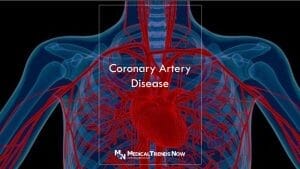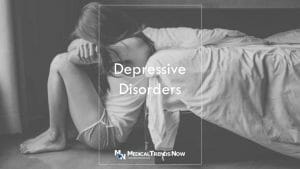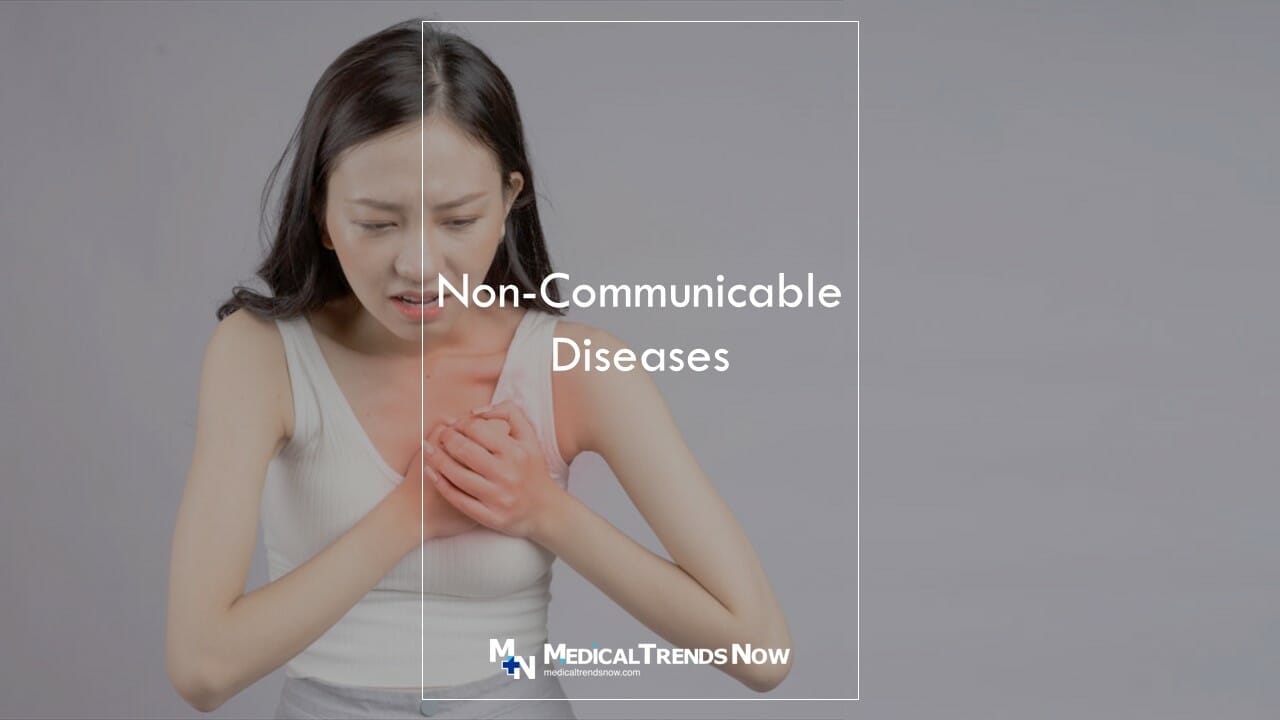Table of Contents
Non-communicable diseases in the Philippines (NCDs), also known as chronic diseases, are not passed from person to person. They are of long duration and generally slow progression. The four main types of NCDs are cardiovascular diseases (like heart attacks and stroke), cancers, chronic respiratory diseases (such as chronic obstructive pulmonary disease and asthma), and diabetes.
According to World Health Organization, non-communicable diseases are responsible for 68% of all deaths in the Philippines. Cardiovascular disease is the leading cause of death, accounting for 27% of all deaths. Cancer is the second leading cause of death, accounting for 18% of all deaths.
There are many different types of non-communicable diseases (NCDs), but some are more common than others. Some of the most common non-communicable diseases in the Philippines are cardiovascular disease, cancer, chronic respiratory disease, and diabetes. These diseases are responsible for the majority of deaths worldwide each year, and they cost the Philippine economy PHP 750 billion annually. If we can prevent these NCDs, Filipinos can save hundreds of billions of pesos each year.
In this article, we will examine 13 common types of non-communicable diseases in the Philippines, their symptoms, diagnosis, treatments, doctors, and prevention.
13 Common Types of Non-Communicable Diseases in the Philippines
1. Alzheimer’s Disease

What is Alzheimer’s Disease
Alzheimer’s disease is the most common form of dementia. It is a progressive, neurodegenerative disease that affects the brain cells of Filipinos, causing them to die. The symptoms of Alzheimer’s include memory loss, confusion, and difficulty with tasks that require mental agility. The cause of Alzheimer’s is not yet known, but it is believed to be a combination of genetic and environmental factors. There is no cure for Alzheimer’s, but there are treatments available to help manage the symptoms.
Types of Dementia Disease
There are many types of dementia, and the most common form is Alzheimer’s disease. Other common types include Lewy body dementia, frontotemporal dementia, and vascular dementia.
Alzheimer’s disease is the most common type of dementia, accounting for 60-80% of cases in the Philippines. It is a degenerative brain disorder that causes problems with memory, thinking, and behavior. Symptoms typically develop slowly and worsen over time. There is no known cure for Alzheimer’s disease, but treatments can help manage symptoms and slow progression of the disease.
Lewy body dementia is the second most common type of dementia in the Philippines, accounting for 10-20% of cases. It is a progressive brain disorder that leads to problems with thinking, movement, and behavior.
Causes of Alzheimer’s Disease
The cause of Alzheimer’s disease is not fully understood, but it is thought to be a combination of genetic, lifestyle, and environmental factors.
There are several theories about what causes Alzheimer s disease, but the most widely accepted theory is that it is caused by a combination of genetic, lifestyle, and environmental factors. Genetics plays a role in about 5% of all cases of Alzheimer s disease. The most important risk factor for developing Alzheimer s disease is age; the risk increases as we get older. Other risk factors include family history, head trauma, and Down syndrome.
Signs and Symptoms of Alzheimer’s Disease
Alzheimer’s disease is a degenerative brain disorder that leads to memory loss and cognitive decline. Early onset Alzheimer’s disease can occur in Filipinos as young as 40 years old, while late-onset Alzheimer’s disease typically affects those over the age of 65. The most common symptom of Alzheimer’s disease is memory loss, which can interfere with daily activities and make it difficult to remember recent events. Other symptoms include trouble with language, disorientation, mood changes, and impaired judgment. As the disease progresses, patients may experience delusions, hallucinations, and difficulty walking or swallowing.
Treatment of Alzheimer’s Disease
There is no known cure for Alzheimer’s disease, which is the most common form of dementia. However, there are treatments that can help to manage the symptoms and slow down the progression of the condition. These include medication, psychological therapies, and support for carers.
Medication can help to relieve some of the symptoms of Alzheimer’s disease, such as memory loss, confusion, and anxiety. The main types of medication used are cholinesterase inhibitors and memantine. Cholinesterase inhibitors work by preventing the breakdown of a chemical called acetylcholine, which is important for memory and thinking. Memantine works by reducing the activity of a neurotransmitter called glutamate, which is thought to be involved in the development of Alzheimer’s disease.
Prevention of Alzheimer’s Disease
There is no known cure for Alzheimer’s disease, which is why prevention is so important. While you can’t do anything to completely prevent the disease, there are things you can do to reduce your risk.
Exercise is one of the best ways to reduce your risk of Alzheimer’s disease. Physical activity increases blood flow to the brain, which helps keep it healthy. It also promotes the growth of new brain cells and connections between cells.
Diet also plays a role in Alzheimer’s prevention. Eating a healthy diet that includes plenty of fruits, vegetables, and whole grains can help reduce your risk. You should also limit your intake of saturated fats and sugar.
Finally, staying mentally active can help keep your brain healthy and reduce your risk of Alzheimer’s disease.
2. Cancer

What is Cancer?
Cancer is one of the most common types of non-communicable diseases in the Philippines. Cancer is a broad term for a group of diseases in which abnormal cells divide without control and can invade nearby tissues. Cancer cells can also spread to other parts of the body through the bloodstream or lymphatic system.
Most Common Types of Cancers in the Philippines
There are more than 100 types of cancer, each with its own set of symptoms, outlook, and treatment options. Some common cancer types in the Philippines include breast cancer, lung and bronchus cancer, prostate cancer, colon and rectum cancer, melanoma of the skin, bladder cancer, non-Hodgkin lymphoma, kidney and renal pelvis cancer, endometrial cancer, leukemia, pancreatic cancer, thyroid cancer, and liver cancer.
Causes of Cancers in the Philippines
There are many different types of cancers, and each has its own set of causes. In general, cancers occur when the body’s cells divide uncontrollably. This can be due to a number of things, including genetic mutations, exposure to certain chemicals or radiation, or even just aging.
Cancers can develop in almost any part of the body, but some common types include breast cancer, lung cancer, colorectal cancer, and skin cancer. While the exact cause of each type may differ somewhat, they all share the same basic mechanism: uncontrolled cell growth.
There are many ways to reduce your risk of developing cancer. Some include staying away from known carcinogens (such as cigarettes), eating a healthy diet, and getting regular exercise. However, even if you do everything right, there’s always a chance that you could develop cancer due to factors beyond your control.
Signs and Symptoms of Cancers in the Philippines
There are many different types of cancer, and each one has its own set of signs and symptoms. However, there are some general symptoms that are common to many types of cancer. These include fatigue, weight loss, and unexplained pain. If you experience any of these symptoms, it is important to see a doctor so that the cause can be diagnosed and treated.
Treatment of Cancers in the Philippines
Cancer is a broad term for a class of diseases characterized by the uncontrolled growth and spread of abnormal cells. If left untreated, cancer can be fatal. There are many different types of cancer in the Philippines, each with its own method of treatment.
Here are some of the types of cancer and their treatments:
The most common type of cancer is skin cancer. Skin cancer is usually treated with surgery to remove the affected area of the skin. In some cases, radiation therapy or chemotherapy may also be used.
Breast cancer is another common type of cancer in the Philippines. Treatment for breast cancer often includes surgery, radiation therapy, and/or chemotherapy. Some Filipino women may also choose to have a mastectomy, which is the removal of one or both breasts.
Prostate cancer is another common type of cancer that affects Filipino men. Treatment for prostate cancer often includes surgery or radiation therapy. Chemotherapy may also be used in some cases.
Prevention of Cancers in the Philippines
Cancer prevention is defined as active measures to reduce cancer risk. It can be achieved through:
- Avoidance of carcinogenic exposures (e.g., tobacco smoke)
- Detection and treatment of pre-cancerous lesions (e.g., breast cancer screening)
- Immunization against certain viruses known to cause cancer (e.g., HPV vaccine)
- Healthy lifestyle choices (e.g. exercising, eating a healthy diet).
3. Cerebrovascular Disease (Stroke)

What is Cerebrovascular Disease (Stroke) in the Philippines
There are many types of non-communicable diseases in the Philippines, but one of the most common is cerebrovascular disease, also known as stroke.
A stroke occurs in Filipinos when the blood supply to the brain is interrupted, depriving the brain of oxygen and nutrients. This can happen due to a blockage in the arteries that supply blood to the brain or if a blood vessel bursts.
Types of Cerebrovascular Disease (Stroke)
There are many types of cerebrovascular disease, all of which can lead to problems with the blood supply to the brain. The most common type is atherosclerosis, which is a buildup of plaque in the arteries. This can narrow or block the arteries, leading to a stroke. Other types include cerebral aneurysms (swelling of the artery wall), cerebral venous thrombosis (blood clot in the veins), and Moyamoya disease (narrowing of the arteries). Treatment depends on the type of disease but may include surgery, medication, or lifestyle changes.
Causes of Cerebrovascular Disease (Stroke)
There are many different types of cerebrovascular disease, but they all have one thing in common: they involve the blood vessels in the brain. These diseases can be caused by a variety of factors, including high blood pressure, atherosclerosis, and diabetes.
High blood pressure is one of the most important risk factors for stroke. It damages the blood vessels in the brain, making them more likely to rupture or block. Atherosclerosis is another major risk factor. This condition occurs when plaque builds up in the arteries, narrowing them and making it difficult for blood to flow through. Diabetes also increases the risk of stroke by damaging the blood vessels and causing inflammation.
Signs and Symptoms of Cerebrovascular Disease (Stroke) in the Philippines
Symptoms of a stroke can include sudden weakness or numbness in the face, arm, or leg; difficulty speaking or understanding speech; blurred vision; and dizziness or loss of balance. If you experience any of these symptoms, it’s important to seek medical help immediately, as a stroke can be fatal.
Treatment of Cerebrovascular Disease (Stroke) in the Philippines
Treatment for a stroke often includes medications to prevent additional strokes and physical therapy to restore movement. A stroke patient may also be prescribed blood thinners to prevent another stroke.
How Stroke is Diagnosed in the Philippines
The doctor will ask about your symptoms and medical history and perform a physical exam.
Prevention of Cerebrovascular Disease (Stroke) in the Philippines
There are a few things that you can do to help prevent cerebrovascular disease, also known as stroke. First, you should try to control your blood pressure. This can be done by eating a healthy diet, exercising regularly, and avoiding smoking. Second, you should control your cholesterol levels and avoid fatty foods. Finally, you should watch for warning signs of stroke and seek medical attention immediately if you experience any of them.
4. Chronic Obstructive Pulmonary Disease (COPD)

What is Chronic Obstructive Pulmonary Disease (COPD)
Chronic obstructive pulmonary disease is one of the most common types of non-communicable diseases in the Philippines. COPD is a type of lung disease that makes it difficult to breathe. The main symptoms of COPD are shortness of breath, coughing, and wheezing. Filipinos with COPD often have a hard time doing everyday activities such as walking or cleaning the house.
Types of Chronic Obstructive Pulmonary Disease (COPD) in the Philippines
Chronic obstructive pulmonary disease (COPD) is a type of lung disease that makes it hard to breathe. There are two main types of Chronic Obstructive Pulmonary Disease (COPD) in the Philippines:
- Emphysema: This type of COPD damages the air sacs in your lungs. Over time, they lose their shape and become less elastic. This makes it harder for air to move in and out of your lungs, which makes it hard to breathe.
-
Chronic bronchitis: This type of COPD damages the lining of your bronchial tubes, which are the airways that carry air to and from your lungs. The damage is usually caused by smoking. Over time, the lining gets thicker and narrower, which makes it hard to breathe.
Causes of Chronic Obstructive Pulmonary Disease (COPD) in the Philippines
COPD is caused by long-term exposure to irritants such as tobacco smoke, dust, and chemicals. The damage from these irritants can build up over time and make it hard for the lungs to work properly. Filipinos with COPD are at an increased risk for lung infections and other health problems.
Signs and Symptoms of Chronic Obstructive Pulmonary Disease (COPD) in the Philippines
Chronic Obstructive Pulmonary Disease (COPD) is a progressive lung disease that makes it difficult to breathe. The main signs and symptoms of COPD include:
- Shortness of breath, especially during physical activity
- Wheezing
- Chest tightness
- Chronic cough
COPD is a serious lung disease that can be disabling and even life-threatening. If you have any of the above symptoms, it’s important to see your doctor so that you can get a diagnosis and treatment plan.
Treatment of Chronic Obstructive Pulmonary Disease (COPD) in the Philippines
There is no cure for COPD, but treatments can help improve symptoms and slow down the progression of the disease. These treatments include quitting smoking, taking medication to open up the airways, and getting regular exercise.
Prevention of Chronic Obstructive Pulmonary Disease (COPD) in the Philippines
There are several things that Filipinos can do to prevent COPD or at least slow its progression. First, it is important to avoid tobacco smoke. If you smoke, quitting is the best thing you can do for your lungs. Second, avoid exposure to secondhand smoke and other airborne pollutants. Wear a mask if you must be around dusty areas. Third, get vaccinated against influenza and pneumonia – both of which can cause serious complications in people with COPD. Finally, see your doctor regularly for checkups and get treated early for any respiratory infections.
5. Coronary Artery Disease

What is Coronary Artery Disease
Coronary Artery Disease (CAD) is one of the most common types of non-communicable diseases in the Philippines. It is a condition in which the arteries that supply blood to the heart become narrow and hard, making it difficult for the heart to pump blood properly. This can lead to chest pain (angina), shortness of breath, heart attacks, and even death. CAD is usually caused by a build-up of plaque on the artery walls, which is made up of cholesterol, fat, and other substances. The good news is that CAD can be prevented by making healthy lifestyle choices for Filipinos, such as eating a healthy diet, exercising regularly, and not smoking.
Types of Coronary Artery Diseases in the Philippines
There are many different types of coronary artery diseases in the Philippines, and they can be classified based on their cause, symptoms, and treatment options. The most common type of coronary artery disease is atherosclerosis, which is caused by the buildup of plaque in the arteries. This can lead to symptoms such as chest pain, shortness of breath, and heart attacks. Treatment for atherosclerosis often includes lifestyle changes, such as quitting smoking and eating a healthy diet, as well as medication to lower cholesterol and blood pressure. Other types of coronary artery disease include coronary microvascular disease and congenital heart defects. Coronary microvascular disease is more common in Filipino women than men, and it can cause chest pain even in the absence of plaque buildup. Congenital heart defects are present at birth and can cause a variety of symptoms depending on the severity of the defect.
Causes of Coronary Artery Disease in the Philippines
There are many possible causes of coronary artery disease in the Philippines, including:
-Atherosclerosis: This is the buildup of plaque (fatty deposits) on the inside of the arteries. Over time, this can narrow or block the arteries and reduce blood flow to the heart. Atherosclerosis is often caused by lifestyle factors such as smoking, high cholesterol, and high blood pressure.
-Inflammation: This is an immune response to injury or infection. It can cause the arteries to swell and narrow, reducing blood flow to the heart. Inflammation is often seen in people with autoimmune diseases such as rheumatoid arthritis.
Signs and Symptoms of Coronary Artery Disease in the Philippines
The most common symptom of coronary artery disease in the Philippines is chest pain, also known as angina. Angina typically feels like a squeezing or tightness in the chest and can occur during physical activity or emotional stress. Other symptoms of coronary artery disease among Filipinos may include shortness of breath, fatigue, and irregular heartbeat. If left untreated, coronary artery disease can lead to a heart attack.
Treatment of Coronary Artery Disease in the Philippines
Coronary artery disease (CAD) is the most common type of heart disease. It occurs when plaque builds up in the arteries that supply blood to your heart muscle. Plaque is made up of fat, cholesterol, calcium, and other substances in the blood. Over time, plaque can harden or rupture, which can lead to a heart attack or stroke.
There are many different treatments for CAD, including lifestyle changes, medication, and surgery. Making lifestyle changes, such as eating a healthy diet and exercising regularly, can help reduce your risk of CAD. If you have CAD, your doctor may also prescribe medication to help lower your cholesterol or prevent clotting. In some cases, surgery may be necessary to open blocked arteries.
Making lifestyle changes is often the first step in treating CAD in the Philippines.
Prevention of Coronary Artery Disease in the Philippines
The best way to prevent coronary artery disease is to live a healthy lifestyle. This means eating a healthy diet, getting regular exercise, and not smoking. Eating a healthy diet includes eating plenty of fruits, vegetables, and whole grains. It also means eating lean protein, such as fish or chicken, and limiting saturated and trans fat. Getting regular exercise means getting at least 150 minutes of moderate-intensity aerobic activity each week. And finally, not smoking means just that—not smoking cigarettes or using other tobacco products.
In addition to living a healthy lifestyle, you can also prevent coronary artery disease by taking medications as prescribed by your doctor.
6. Depressive Disorders

What are Depressive Disorders
Depressive disorders are some of the most common types of non-communicable diseases in the Philippines. They are a group of mental disorders that share a common feature of depressed mood. They can be mild, moderate, or severe. The most common types of depressive disorders are major depressive disorder, dysthymia (persistent depressive disorder), and bipolar disorder.
Major depressive disorder is the most serious type of depressive disorder. It is characterized by a depressed mood that lasts for at least two weeks, accompanied by other symptoms such as loss of interest in activities, fatigue, weight loss or gain, sleep problems, and thoughts of death or suicide. Major depressive disorder can significantly interfere with a person’s ability to function at work or school and can cause problems with relationships.
Dysthymia (persistent depressive disorder) is a less severe but more chronic form of depression.
Types of Depressive Disorders in the Philippines
There are a number of different types of depressive disorders in the Philippines, each with its own unique set of symptoms. Major depressive disorder, or MDD, is the most common type of depression. People with MDD experience a persistent low mood and loss of interest in activities that they normally enjoy. They may also experience changes in appetite and sleep patterns, fatigue, and difficulty concentrating.
Another type of depression is dysthymia, which is a less severe but more chronic form of the disorder. People with dysthymia may not meet the full criteria for MDD but still, experience many of the same symptoms on a less severe level.
Lastly, there is bipolar disorder, which is characterized by periods of both mania and depression. Mania is a period of abnormally elevated mood and energy levels, while depression refers to the low moods associated with MDD.
Causes of Depressive Disorders in the Philippines
Most experts believe that depressive disorders are caused by a combination of genetic and environmental factors. For example, people who have a family history of depression may be more likely to develop the condition themselves. And people who experience traumatic or stressful life events (such as the death of a loved one) may also be at increased risk.
There are still many researchers who don’t understand the causes of depressive disorders. However, studies have shown that these conditions are often associated with changes in brain function and structure. For example, people with depression may have abnormalities in certain brain chemicals (such as serotonin) that play a role in regulating mood.
Signs and Symptoms of Depressive Disorders Among Filipinos
Depressive disorders are characterized by a persistent feeling of sadness and loss of interest in activities that people once enjoyed. Other symptoms can include fatigue, changes in appetite or weight, sleep problems, decreased energy, restlessness, and difficulty concentrating. In severe cases, people may have thoughts of suicide.
Treatment of Depressive Disorders in the Philippines
There are a variety of treatment options available for people with depressive disorders. The most common form of treatment is medication, which can be prescribed by a psychiatrist or other mental health professional. Medication can be effective in treating the symptoms of depression, but it is not a cure.
Psychotherapy is another common treatment option for people with depressive disorders. This type of therapy can help people to understand and manage their symptoms. Cognitive behavioral therapy (CBT) is one type of psychotherapy that has been shown to be particularly effective in treating depression.
In some cases, hospitalization may be necessary to treat severe depression.
Prevention of Depressive Disorders in the Philippines
Depression is a serious medical illness that negatively affects how Filipinos feel, the way they think and how they act. Fortunately, it is also one of the most treatable of all mental illnesses.
There are many ways to prevent depressive disorders in the Philippines. The most important thing Filipinos can do is to get help early if they think someone they know may be depressed.
Warning signs of depression include prolonged sadness or irritability, lost interest in activities that used to bring pleasure, reduced energy levels, changes in appetite or weight, difficulty sleeping or concentrating, feelings of hopelessness, and thoughts of death or suicide. If these persist for more than two weeks, it’s time to seek professional help.
7. Diabetes

What is Diabetes
There are a number of different types of non-communicable diseases in the Philippines, but one of the most common is diabetes. Diabetes is a disease that affects the body s ability to produce and use insulin. Insulin is a hormone that regulates blood sugar.
Differences between Type 1 and Type 2 Diabetes in the Philippines
Type 1 diabetes is usually diagnosed in Filipino children and young adults, while type 2 diabetes is more common in adults. Both types of diabetes can cause serious health complications if left untreated.
Type 1 diabetes occurs when the body does not produce enough insulin. Insulin is a hormone that helps the body to process sugar. Without enough insulin, the body cannot properly use glucose for energy, and blood sugar levels can become very high. This can lead to serious health problems such as heart disease, stroke, and kidney failure.
Type 2 diabetes occurs when the body does not produce enough insulin or when the body does not properly use the insulin it produces. When this happens, sugar builds up in the blood instead of being used for energy.
Types of Diabetes in the Philippines
Type 1 diabetes is where the body doesn’t produce insulin, and it’s usually diagnosed in Filipino children or young adults. Type 2 diabetes is when the body doesn’t produce enough insulin, or the cells don’t respond properly to insulin, and it’s usually diagnosed in adults over the age of 40.
Causes of Diabetes in the Philippines
Diabetes is caused by a combination of genetic and lifestyle factors. The most important risk factor for type 2 diabetes is obesity. Other risk factors include lack of physical activity, family history, and age. Type 2 diabetes can be prevented or delayed by maintaining a healthy weight, being physically active, and eating a healthy diet.
Type 1 diabetes is usually diagnosed in children and young adults. It occurs when the body does not produce enough insulin. Type 1 diabetes is treated with insulin injections and a special diet.
Type 2 diabetes is the most common type of diabetes. It occurs when the body does not produce enough insulin or the insulin that is produced does not work properly. Type 2 diabetes can usually be controlled with lifestyle changes and medications. This type of diabetes is also called non-insulin-dependent diabetes.
Signs and Symptoms of Diabetes in the Philippines
Symptoms of diabetes can include feeling very thirsty, urinating more often than usual, feeling tired all the time, unexplained weight loss, blurred vision, and cuts or wounds that heal slowly. If you have any of these symptoms, you should see your doctor as soon as possible.
Treatment of Diabetes in the Philippines
Treatment for diabetes typically involves making lifestyle changes, such as eating a healthy diet and exercising regularly. In some cases, medication may also be necessary to help control blood sugar levels. In severe cases, surgery may be required to remove part of the pancreas.
If left untreated, diabetes can lead to serious health problems such as heart disease, stroke, kidney disease, blindness, and amputation.
Prevention of Diabetes in the Philippines
There is no known prevention for type 1 diabetes in the Philippines, as it is an autoimmune disease. However, there are some things that can be done to help lower your risk.
Type 1 diabetes is usually diagnosed in Filipino children and young adults, so it’s important for parents to know the signs and symptoms. If you notice any of the following in your child, please contact a doctor immediately:
- Excessive thirst or urination
- Extreme hunger
- Sudden weight loss
- Fatigue or Irritability
An early diagnosis can make all the difference in managing type 1 diabetes.
On the other hand, there are several ways to prevent type 2 diabetes, the most common form of the disease. Perhaps the most important is to maintain a healthy weight. This can be done through diet and exercise. Eating a diet that is low in fat and sugar can help to prevent type 2 diabetes. Exercise helps to keep blood sugar levels in check and also helps to prevent obesity.
Another way to prevent type 2 diabetes among Filipinos is to get regular physical activity. This can help to control blood sugar levels and also helps to improve insulin sensitivity. Getting at least 30 minutes of moderate-intensity aerobic activity on most days can help to prevent type 2 diabetes.
Finally, it is important to monitor blood sugar levels regularly. This can help people with prediabetes identify when they are at risk for developing type 2 diabetes so that they can take steps to prevent it.
8. Epilepsy

What is Epilepsy
Epilepsy is one of the most common types of non-communicable diseases in the Philippines. It is a neurological disorder that affects the nervous system. It is characterized by recurrent seizures that can vary in severity. Epilepsy can be caused by genetic factors, head injuries, brain tumors, and other conditions. Treatment typically involves medication and lifestyle changes.
Types of Epilepsy in the Philippines
There are many types of epilepsy, with various symptoms and causes. The most common type, called grand mal epilepsy, is characterized by convulsions and loss of consciousness. Other types include petit mal epilepsy, which is marked by brief periods of unconsciousness or staring spells; temporal lobe epilepsy, which causes seizures that begin in the temporal lobe of the brain; and focal (partial) epilepsy, which produces seizures that originate in one specific area of the brain. Epilepsy can be caused by head injury, stroke, brain tumor, or other conditions that damage the brain.
Causes of Epilepsy in the Philippines
There are many different types of epilepsy, and the exact cause is unknown in most cases. However, there are some known risk factors that may contribute to the development of this condition.
Epilepsy may be caused by genetic factors, head injuries, or certain infections or illnesses. It has also been linked to problems with the development of the brain before birth or during early childhood. In some cases, no specific cause can be identified.
Signs and Symptoms of Epilepsy in the Philippines
The most common symptom of epilepsy is a sudden, brief loss of consciousness (“blackout”) followed by convulsions or muscle spasms. Other symptoms may include: changes in behavior, confusion, staring spells, sleepiness, unusual sensations (tingling, smells), and psychic symptoms (fear, déjà vu).
Treatment of Epilepsy in the Philippines
Epilepsy is one of the most common non-communicable diseases in the Philippines. The prevalence of epilepsy in the Philippines is 1%, which is higher than the global prevalence of 0.5%. Epilepsy is more common in rural areas than in urban areas. The most common type of epilepsy in the Philippines is rolandic epilepsy, which accounts for 50% of all cases.
There are many treatment options available for epilepsy. The most common treatment is an anti-seizure medication, which can control seizures in 70% of people with epilepsy.
While there is no cure for epilepsy, it can be managed with medication and other treatments. With proper care and management, people with epilepsy can live full and healthy lives.
Prevention of Epilepsy in the Philippines
There are several things that can be done to help prevent epilepsy. First, it is important to get prompt treatment for any medical condition that may increase the risk of seizures, such as head injuries, stroke, or brain tumors. Second, people should avoid alcohol and illegal drugs, which can trigger seizures. Finally, it is important to manage stress and get enough sleep, as both can contribute to the development of epilepsy.
9. Heat Stroke

What is Heat Stroke
Heat stroke is one of the many forms of non-communicable diseases in the Philippines that is caused by prolonged exposure to high temperatures. The symptoms of a heat stroke include confusion, headache, nausea, and vomiting. If not treated immediately, a heat stroke can lead to death.
Types of Heat Stroke in the Philippines
There are two types of heat stroke, sunstroke, and exertional heat stroke. Sunstroke, also called classical or traditional heat stroke, happens when the body is unable to regulate its temperature in hot, humid weather. The victim’s skin is hot and dry to the touch, and they may have a headache, dizziness, or nausea. Exertional heat stroke happens during strenuous physical activity in hot weather. The victim’s skin is usually moist and their body temperature may be lower than with sunstroke. They may also have muscle cramps and fatigue. Both types of heat stroke are medical emergencies and can be fatal if not treated promptly.
Causes of Heat Stroke Among Filipinos
There are many different types of non-communicable diseases, but one of the most common is heat stroke. Heat stroke occurs when the body temperature rises to a level that is too high for the body to cope with. This can be caused by exposure to hot weather or by physical activity in a hot environment. If the body temperature rises too high, it can lead to damage to the brain and other organs.
Signs and Symptoms of Heat Stroke in the Philippines
There are a few signs and symptoms of heat stroke to be aware of. They include:
- A high body temperature, often above 104 degrees Fahrenheit
- Hot, red, dry, or damp skin
- Fast heartbeat
- Headache
- Dizziness or lightheadedness
- Nausea or vomiting
- Confusion or hallucinations
If you experience any of these symptoms, it’s important to seek medical attention immediately, as heat stroke can be life-threatening.
Treatments of Heat Stroke in the Philippines
There are two types of treatments for heat stroke in the Philippines: cooling the body and providing fluids. Cooling the body can be done by taking a cool bath or shower, using a fan, or applying ice packs to the armpits and groin area. It is important to avoid drinking alcohol or caffeinated beverages as these can actually make the situation worse. Providing fluids helps to prevent dehydration and can be done by drinking clear fluids like water or sports drinks. In severe cases, IV fluids may be necessary.
Prevention of Heat Stroke in the Philippines
There are some simple steps that can be taken to prevent heat stroke, such as: avoiding strenuous activity in hot weather, wearing light, loose-fitting clothing; drinking plenty of fluids, and avoiding alcohol. If you are outside in hot weather, try to stay in the shade as much as possible.
If you start to feel unwell in hot weather, seek medical attention immediately. Early treatment of heat stroke is essential to avoid serious health complications or death.
10. High Blood Pressure or Hypertension

What is High Blood Pressure or Hypertension?
Hypertension, or high blood pressure, is one of the most common non-communicable diseases in the Philippines. It occurs when the force of blood against the artery walls is too high. This can damage the arteries and lead to serious health problems, such as heart disease, stroke, and kidney disease.
Types of High Blood Pressure or Hypertension
There are two types of hypertension: primary and secondary.
Primary hypertension is the most common type of hypertension. It develops over time and has no specific cause.
Secondary hypertension occurs as a result of another medical condition, such as kidney disease, adrenal gland disorders, sleep apnea, or certain medications.
If you have high blood pressure, you may not have any symptoms. That’s why it’s important to get your blood pressure checked regularly. If you do have symptoms, they may include headache, shortness of breath, nosebleeds, and anxiety.
Causes of High Blood Pressure or Hypertension
Hypertension, or high blood pressure, is a condition that can be caused by a variety of factors. Sometimes it is genetic, meaning that it runs in families. Other times, it can be caused by lifestyle choices, such as smoking, being overweight, or eating an unhealthy diet.
Stress can also play a role in hypertension. If Pinoy workers are under a lot of stress, their blood pressure may rise. Hypertension is a serious condition that can lead to heart disease and stroke, so it is important to see a Filipino doctor if you think you may have it.
Signs and Symptoms of High Blood Pressure or Hypertension
There are often no symptoms of hypertension, which is why it is important to get regular check-ups. However, when symptoms do occur, they may include headache, shortness of breath, nosebleeds, and dizziness.
If you have any of these symptoms or if you are concerned about your blood pressure, be sure to see your doctor. Hypertension can be treated with lifestyle changes and medication.
Treatments of High Blood Pressure or Hypertension
There are many different treatments for hypertension, depending on the cause and severity of the condition. In most cases, lifestyle changes, such as eating a healthy diet and exercising regularly, can help to control blood pressure. If these changes don’t work, medication may be necessary.
Some common medications used to treat hypertension include diuretics, ACE inhibitors, beta-blockers, and calcium channel blockers. These drugs work by helping to relax the blood vessels and reduce the amount of water in the body. They can often be taken together to achieve the best results.
Prevention of High Blood Pressure or Hypertension
There are many things Filipinos can do to lower their blood pressure, including eating healthy Filipino food, maintaining a healthy weight, and getting regular exercise.
11. Obesity and Overweight

What is Obesity
Obesity and overweight are two of the most common types of non-communicable diseases in the Philippines. They are both terms used to describe excess body fat. Obesity is a more serious condition that can lead to health problems. Overweight is often used as a less serious term, but it can still indicate excess body fat and potential health risks.
There are many factors that can contribute to obesity and overweight, including genetics, lifestyle choices, and medical conditions. In some cases, people may be obese or overweight due to their environment or cultural norms. For example, people who live in poverty may be more likely to be obese or overweight because they cannot afford healthy food options or have access to safe places to exercise.
Obesity and overweight can increase the risk of developing several chronic diseases, including heart disease, stroke, diabetes, and certain types of cancer. These conditions can lead to disability and premature death.
Types of Obesity and Overweight in the Philippines
There are many types of obesity and overweight, which are determined by a person’s BMI. A person is considered obese when their BMI is 30 or higher and overweight when their BMI is 25-29.9.
The most common type of obesity is abdominal obesity, which is when a person has an excess of fat around their waist. This type of obesity can lead to health problems such as heart disease, stroke, and diabetes.
Another type of obesity is known as android obesity, which is when a person has an excess of fat around their trunk and upper body. This type of obesity can also lead to health problems such as heart disease, stroke, and diabetes.
Causes of Obesity and Overweight Among Filipinos
Obesity and overweight are commonly caused by a combination of factors, including genetics, overeating, and a sedentary lifestyle. Obesity is often the result of an imbalance between energy intake and expenditure. When more calories are consumed than expended, the body stores the excess as fat. Genetics plays a role in obesity by affecting how the body processes and stores fat.
Overeating can lead to weight gain, particularly if high-calorie foods are consumed on a regular basis. A sedentary lifestyle also contributes to weight gain by causing the body to burn fewer calories.
There are many health risks associated with obesity and overweight, including heart disease, stroke, diabetes, and certain types of cancer. Obese individuals are also more likely to experience joint pain and sleep disorders.
Signs and Symptoms of Obesity and Overweight in the Philippines
There are many signs and symptoms of obesity and overweight. Some common ones include:
- Excess body fat, especially around the waist
- A Body Mass Index (BMI) of 30 or higher
- High blood pressure
- High cholesterol
- Type 2 diabetes
- Sleep apnea
- Joint pain
- Fatigue
If you are obese or overweight, it is important to talk to your doctor about ways to lose weight safely. Losing even a small amount of weight can help reduce your risk of developing serious health problems.
Treatments of Obesity and Overweight in the Philippines
The most common treatments for obesity and overweight among Filipinos are lifestyle changes such as eating a healthy diet and getting regular physical activity or exercise can help. In some cases, medications may also be recommended.
Prevention of Obesity in the Philippines
One way to prevent obesity is to eat healthy Filipino snacks and food. Eating lots of fruits, vegetables, and whole grains will help you maintain a healthy weight. Avoiding sugary drinks and junk food will also help.
Another way to prevent obesity is to get regular exercise. Exercise helps you burn calories and maintain a healthy weight. It is important to get at least 30 minutes of moderate exercise most days of the week.
You can also prevent obesity by maintaining a healthy lifestyle. This means not smoking and drinking alcohol in moderation. Getting enough sleep and managing stress are also important for maintaining a healthy weight.
12. Osteoarthritis

What is Osteoarthritis
Osteoarthritis is one of the most common types of non-communicable diseases in the Philippines. It is a type of arthritis that occurs when the cartilage between joints breaks down. This can lead to pain, swelling, and stiffness in the affected area.
Osteoarthritis is a degenerative disease, which means it gets worse over time.
Types of Osteoarthritis in the Philippines
There are many different types of osteoarthritis, but the most common are degenerative, inflammatory, and traumatic.
Degenerative osteoarthritis is the most common type and occurs when the cartilage between the joints breaks down. This can happen due to age, wear and tear, or genetics. Inflammatory osteoarthritis is less common and occurs when the body’s immune system attacks the joints. This can be caused by an infection or another underlying condition. Traumatic osteoarthritis is caused by an injury to the joint, such as a fracture or dislocation.
Osteoarthritis can cause pain, stiffness, and swelling in the affected joints. It can also make it difficult to move the affected joint. In severe cases, osteoarthritis can lead to disability.
Causes of Osteoarthritis Among Filipinos
There are many causes of osteoarthritis, but the most common is age. As we age, our bones and joints degenerate and wear down. This process is called osteoarthritis. Other causes of osteoarthritis include obesity, injury, and overuse of joints. Obesity puts extra stress on joints and leads to inflammation. Injury can damage cartilage and cause joint deformity. Overuse of joints can lead to the breakdown of cartilage.
Osteoarthritis is a very common condition that affects 4.2 million Filipinos, according to Osteoarthritis and Cartilage Journal. While it is most commonly seen in older adults, it can also affect younger people. There are many different treatments available for osteoarthritis, but the best way to prevent it is to maintain a healthy weight, exercise regularly, and avoid injury.
Signs and Symptoms of Osteoarthritis Among Filipinos
There are many signs and symptoms associated with osteoarthritis, and they vary depending on the individual. The most common symptom is pain, which can range from mild to severe. Other symptoms include stiffness, swelling, and limited range of motion. Some people with osteoarthritis may also experience fatigue and a loss of appetite.
Osteoarthritis is a progressive disease, meaning that it typically gets worse over time. However, the rate at which it progresses varies from person to person. Some people may only experience minor symptoms, while others may develop disabling joint damage. There is no way to predict how fast the disease will progress or how severe the symptoms will be.
Treatments of Osteoarthritis in the Philippines
There are multiple ways and methods of treating osteoarthritis, as the condition can vary significantly from person to person. However, there are a few general principles that can guide treatment decisions.
First, it is important to identify and address any underlying causes of osteoarthritis, such as obesity or joint injury. Second, patients should aim to maintain a healthy weight, as excess weight can put undue strain on joints and make symptoms worse. Third, patients should focus on pain relief and management, as well as maintaining joint function and mobility.
There are a variety of ways to achieve these goals, and the most effective approach will likely vary from person to person. Common treatments include pain medication, physical therapy, exercise, weight loss, and surgery.
Prevention of Osteoarthritis in the Philippines
There are many ways to prevent osteoarthritis, and some methods are more effective than others. One of the best ways to prevent osteoarthritis is to maintain a healthy weight. Excess weight puts added stress on joints, which can damage them over time and lead to osteoarthritis.
Another good way to prevent osteoarthritis is to exercise regularly. Exercise strengthens muscles and helps keep joints flexible, which can reduce the risk of developing osteoarthritis.
Finally, it’s important to eat a healthy diet that includes plenty of fruits, vegetables, and whole grains. Eating a healthy diet helps reduce inflammation in the body, which can help prevent osteoarthritis.
13. Osteoporosis

What is Osteoporosis
Osteoporosis is one of the most common types of non-communicable diseases in the Philippines. Osteoporosis is a degenerative disease characterized by thinning of the bones and loss of bone density. It is a major health problem for older Filipino women, especially those who have undergone menopause.
The risk of osteoporosis can be reduced by maintaining a healthy diet and lifestyle, including regular exercise and adequate calcium intake.
Types of Osteoporosis in the Philippines
There are two main types of osteoporosis: primary and secondary.
Primary osteoporosis is the most common type, affecting about 80 percent of all Filipinos with the condition. It typically occurs later in life, after menopause in women and after age 65 in Filipino men. Secondary osteoporosis can be caused by a number of different conditions, medications, or lifestyle choices. It often affects younger people and can lead to more serious problems.
Causes of Osteoporosis Among Filipinos
Osteoporosis is a non-communicable disease in the Philippines that affects bones, making them weak and brittle. There are many causes of osteoporosis, including:
A sedentary lifestyle: People who don’t get enough exercise are at a higher risk for osteoporosis. Bones need to be worked in order to stay strong, and without regular exercise, they can become weakened.
Poor nutrition: A lack of important nutrients like calcium and vitamin D can lead to osteoporosis. These nutrients are essential for strong bones, so without them, the bones can become weak and porous.
Certain medications: Some medications, such as steroids, can cause bone loss and lead to osteoporosis. If you’re taking any medications, it’s important to speak with your doctor about the possible side effects.
Signs and Symptoms of Osteoporosis Among Filipinos
There are several signs and symptoms of osteoporosis among Filipinos. Some are obvious, while others are subtle.
The most common symptom is bone pain. This occurs when bones start to break down and become weaker. The pain can spread from your back into your arms or legs.
Treatments of Osteoporosis in the Philippines
There are many treatments for osteoporosis, but the most effective is preventative. Some treatments aim to stop the progression of the disease, while others seek to reverse it.
Reversing osteoporosis is more difficult, but it is possible with certain treatments. First, any underlying causes must be treated. For example, if a Filipino has an autoimmune disorder that is causing osteoporosis, treating that disorder will be the first step in reversing their bone loss.
Prevention of Osteoporosis in the Philippines
There are a number of things that people can do to prevent osteoporosis or at least reduce their risk of developing the condition. One of the most important is to get enough calcium and vitamin D. This can be done through diet or supplements. Other important measures include getting regular exercise, avoiding smoking, and limiting alcohol intake.
People with certain medical conditions are at increased risk of osteoporosis and may need to take special precautions. These conditions include celiac disease, Crohn’s disease, rheumatoid arthritis, and type 1 diabetes. Treatment for these conditions can often help to prevent osteoporosis.
Conclusion: Common Types of Non-Communicable Diseases in the Philippines
In conclusion, there are many different types of non-communicable diseases in the Philippines that can affect Filipinos of all ages. These diseases can be caused by a variety of factors, including genetics, lifestyle choices, and environmental factors.
Some common types of non-communicable diseases in the Philippines include heart disease, stroke, cancer, diabetes, and chronic respiratory diseases. Non-communicable diseases in the Philippines are a leading cause of death, according to the Department of Health, and it is important to be aware of the risk factors for these diseases.
Sources: Common Types of Non-Communicable Diseases in the Philippines
- What is diabetes – International Diabetes Federation
- What are the common types of Dementia? Dementia Society of the Philippines
- Cancer Statistics – NCI
- Clinical profile of Filipino patients with osteoarthritis seen at two arthritis clinics (for the osteoarthritis network of the Philippine general hospital) – Osteoarthritis and Cartilage, Elsevier Inc
- Alzheimer’s disease – Symptoms and causes – Mayo Clinic
- What Is Cancer? – NCI
- Cerebrovascular Disease – American Association of Neurological Surgeons
- Chronic obstructive pulmonary disease (COPD) – NHS
- Coronary Artery Disease: Symptoms, Causes & Treatment – Cleveland Clinic
- Osteoporosis Overview – NIH Osteoporosis and Related Bone Diseases National resource Center
- Osteoarthritis – Arthritis Foundation
- Obesity and overweight – World Health Organization (WHO)
- Dehydration and Heat Stroke | Johns Hopkins Medicine
- What Is Epilepsy? – Epilepsy Foundation
- What is High Blood Pressure? | American Heart Association
- What Is Depression? – American Psychiatric Association













